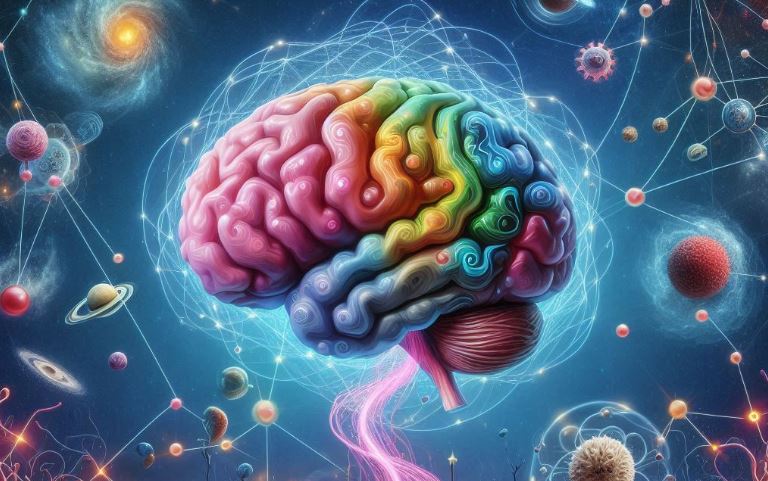Ever wondered how your brain manages to learn new skills or recover from injuries? That’s neuroplasticity at work—the brain’s amazing ability to reorganize and adapt. Let’s dive into how this incredible process happens and why it matters to you.
What is Neuroplasticity?
Neuroplasticity is the brain’s ability to change its structure and function in response to experiences, learning, or injury. Imagine your brain as a dynamic, constantly evolving network, where connections between neurons (brain cells) are not fixed but can be strengthened, weakened, or even created anew.
How Does Neuroplasticity Work?
Neuroplasticity works through two main processes:
- Synaptic Plasticity: Changes in the strength of connections between neurons.
- Structural Plasticity: Changes in the actual structure of the brain, such as the growth of new neurons or changes in gray matter density.
These changes are driven by:
- Learning and Experience: Every time you learn something new, your brain rewires itself. This can be as simple as picking up a new hobby or as complex as mastering a language.
- Recovery from Injury: After a brain injury, neuroplasticity helps the brain compensate for lost functions or maximize the remaining ones.
Can Adults’ Brains Really Change?
Absolutely! While neuroplasticity is most robust during childhood, adults’ brains remain capable of significant change. For example, adults can learn new languages, develop new skills, and even recover from strokes by creating new neural pathways.
How To Improve Neuroplasticity in My Brain?
Here are some effective ways to enhance neuroplasticity:
- Keep Learning: Engage in activities that challenge your brain, such as puzzles, reading, or learning a new instrument.
- Exercise Regularly: Physical activity increases blood flow to the brain and stimulates the growth of new neurons.
- Stay Social: Interacting with others can stimulate neural activity and promote brain health.
- Get Enough Sleep: Sleep is crucial for memory consolidation and brain health.
Real-Life Examples of Neuroplasticity
Language Learning in Adults: A well-known example is how adults who immerse themselves in learning a new language show increased gray matter in the brain regions associated with language processing. This structural change is a direct result of neuroplasticity.
Stroke Recovery: Patients who suffer a stroke often lose abilities associated with the damaged part of their brain. Through rehabilitation and neuroplasticity, other parts of the brain can sometimes take over these functions, allowing patients to regain lost skills.
Why is Neuroplasticity Important?
Adaptation: Neuroplasticity enables us to adapt to new situations and environments. Whether it’s learning to use new technology or adapting to physical changes, our brains can adjust and improve.
Mental Health: Understanding neuroplasticity has significant implications for mental health. For instance, cognitive-behavioral therapy (CBT) leverages neuroplasticity to help individuals reframe negative thought patterns, effectively ‘rewiring’ their brains.
Recovery from Injury: Neuroplasticity is a beacon of hope for individuals recovering from brain injuries. With the right therapies, the brain can often find new pathways to restore lost functions.
How to Incorporate Neuroplasticity in Daily Life?
Engage in Novel Activities
- Try New Hobbies: Whether it’s painting, cooking a new cuisine, or learning a musical instrument, novel activities challenge your brain.
- Travel: Exploring new places exposes your brain to new sights, sounds, and experiences, stimulating neural growth.
Practice Mindfulness and Meditation
- Mindfulness: Regular practice of mindfulness meditation has been shown to increase gray matter in areas associated with learning, memory, and emotional regulation.
- Stress Reduction: Lowering stress levels through mindfulness can enhance neuroplasticity, as chronic stress negatively impacts the brain’s ability to adapt.
Neuroplasticity in Education
In educational settings, understanding neuroplasticity can revolutionize teaching methods:
- Personalized Learning: Tailoring education to individual learning styles can enhance neuroplasticity and improve outcomes.
- Growth Mindset: Encouraging a growth mindset—believing that abilities can be developed through hard work—can foster a more plastic and adaptable brain.
Conclusion
Neuroplasticity, the brain’s ability to reorganize and adapt, is a powerful phenomenon that affects every aspect of our lives. By understanding and leveraging neuroplasticity, we can enhance learning, boost recovery from injuries, and improve mental health. Whether you’re learning a new skill, recovering from an injury, or simply looking to keep your brain sharp, embracing activities that promote neuroplasticity can lead to a richer, more adaptable life.
Neuroplasticity isn’t just a scientific concept; it’s a gateway to endless possibilities for personal growth and recovery. So, keep challenging your brain, stay active, and never stop learning—your brain will thank you!






